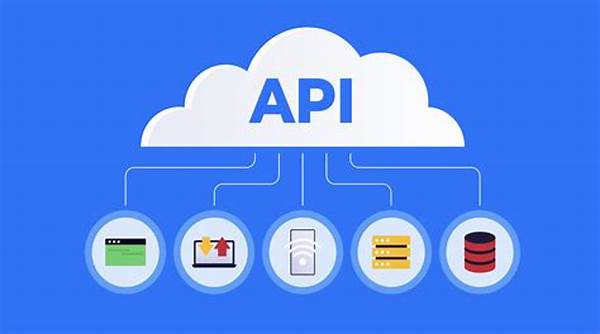In the contemporary digital landscape, the rapid execution of data operations is a critical determinant of an application’s success. As the backbone of application architecture, APIs (Application Programming Interfaces) play a pivotal role in ensuring seamless communication between different software components. Thus, API data performance optimization has emerged as an essential endeavor, facilitating efficient data transfer, reducing latency, and enhancing user experience. This article elucidates various techniques and strategies integral to optimizing API data performance, highlighting the significance of a well-optimized API infrastructure in today’s digital era.
Read Now : Improving Quality In Scientific Research
Importance of API Data Performance Optimization
The significance of API data performance optimization cannot be understated in an era where application responsiveness greatly impacts user satisfaction and business success. By optimizing the performance of APIs, applications can achieve faster data retrieval and processing times, which are pivotal in dynamic environments where users demand instant access to information. Furthermore, efficient API performance not only contributes to a better user experience but also improves the scalability of applications, allowing them to handle increased loads without compromise. Effective optimization strategies ensure that systems remain robust and adaptable, capable of meeting ever-evolving technological demands with agility and precision.
To optimize API data performance, developers prioritize several key aspects. Firstly, reducing latency is crucial, which can be achieved by leveraging caching mechanisms and efficient database queries. Secondly, minimizing the payload size in API responses can expedite data transfer, thus enhancing overall performance. Thirdly, implementing rate limiting ensures that APIs are not overwhelmed by excessive requests, preserving system stability. Fourthly, optimizing the server infrastructure, such as utilizing load balancers and scalable cloud services, can significantly boost performance. Lastly, constant monitoring and testing of API endpoints enable the identification of potential bottlenecks and areas needing improvement.
Strategies for Effective Optimization
Implementing effective strategies is paramount for API data performance optimization. One strategy involves optimizing data serialization processes, as faster serialization can lead to more efficient data transmission. Another strategy emphasizes the importance of API versioning, which allows for backward compatibility and smoother transitions between different API updates. Additionally, employing asynchronous processing techniques can minimize wait times for users by offloading time-consuming tasks to background operations. Testing API endpoints under various conditions is also essential to ensure consistent performance across different scenarios. Finally, adopting a microservices architecture can improve modularity, making it easier to manage and optimize API components independently.
Technical Considerations in API Data Performance Optimization
Several technical considerations play a vital role in API data performance optimization. Firstly, developers should employ efficient data structures that facilitate quicker access and manipulation of data. Secondly, compressing data at both the request and response stages can help reduce the bandwidth usage, thus enhancing API performance. Thirdly, using edge computing and Content Delivery Networks (CDNs) can effectively reduce latency by bringing content closer to the user geographically. Fourthly, leveraging HTTP/2 can allow multiplexing, reducing the time taken to establish connections. Lastly, implementing robust security measures ensures data integrity without compromising performance.
Challenges and Solutions in API Data Performance Optimization
The realm of API data performance optimization is fraught with challenges, yet overcoming these hurdles is crucial for the seamless functioning of modern applications. One challenge lies in managing the growing volume of data that APIs must handle. As data sets expand, performance can degrade without proper management strategies. Implementing efficient data filtering and pagination techniques can mitigate such issues, ensuring that only relevant data is processed and transferred. Additionally, balancing the trade-off between security and performance is another notable challenge. While robust security measures are indispensable, they should be designed to impose minimal impact on performance. Utilizing lightweight encryption algorithms and maintaining up-to-date security protocols can address this concern effectively.
Read Now : Performance Optimization For Microservices
Moreover, integrating new technologies and maintaining compatibility pose challenges in the API domain. As new standards and technologies emerge, APIs must be adaptable to embrace these changes without causing disruptions. Ensuring backward compatibility while incorporating novel features can be complex. Implementing thorough testing protocols and maintaining comprehensive documentation are essential practices to navigate this dynamic landscape. Furthermore, some challenges are associated with maintaining consistent performance across diverse network conditions. Leveraging adaptive algorithms that adjust according to network bandwidth and conditions can enhance resilience and ensure optimal performance.
Evaluating Tools and Techniques for Optimization
Various tools and techniques are instrumental in achieving API data performance optimization. Profiling tools help identify bottlenecks and inefficiencies within the API architecture. Load testing tools simulate different load conditions, providing insights into performance under varying degrees of stress. Additionally, monitoring solutions provide real-time analytics on API usage and performance metrics, allowing for timely interventions when issues arise. Utilizing these tools effectively can lead to significant performance improvements, ensuring that APIs remain responsive and reliable.
Conclusion on API Data Performance Optimization
In conclusion, API data performance optimization is a multifaceted endeavor that requires a holistic approach to achieve optimal results. By employing a combination of strategic planning and technical expertise, organizations can ensure their APIs operate efficiently and reliably, delivering high performance even under demanding circumstances. The integration of new technologies, continuous monitoring, and the application of best practices enable the development of robust APIs capable of supporting dynamic and complex digital environments. As the demand for faster, more efficient digital services increases, prioritizing API optimization becomes imperative for maintaining competitive advantage and ensuring user satisfaction in the digital marketplace of today and the future.
